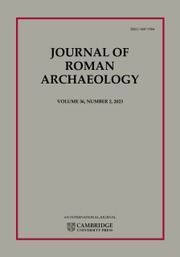Article contents
Beef in Roman Italy
Published online by Cambridge University Press: 15 November 2017
Extract
The purpose of this paper is to re-examine the production and consumption of meat from domesticated animals in Roman Italy using zooarchaeological and textual evidence. The focus is on the proportions of meat from the three main domesticates (cattle, pig, sheep/goat) and their chronological changes.
The most important livestock meat eaten by Romans is traditionally considered to have been pork. Certainly there is much more literary evidence for pork than for beef or mutton/goat meat. Such apparent Roman preference for pork is typically seen in Apicius' De re coquinaria, where the preference for pork (11 references) over mutton (2), goat meat (1) and beef (2) is obvious; likewise, the number of references to meat from young animals is much larger for suckling pig meat (22 references) than for lamb (10), kid meat (7) or veal (4). K. D. White considered that “meat was not a prime article of diet … and beef was less important within this restricted range than pork …”. J. M. Frayn believed sheep were reared primarily for wool, not for meat or cheese, and that lamb was eaten only exceptionally. Beef and mutton/goat meat are thus considered to have been of much less importance than pork in the Roman diet.
- Type
- Articles
- Information
- Copyright
- Copyright © Journal of Roman Archaeology L.L.C. 2017
- 2
- Cited by


